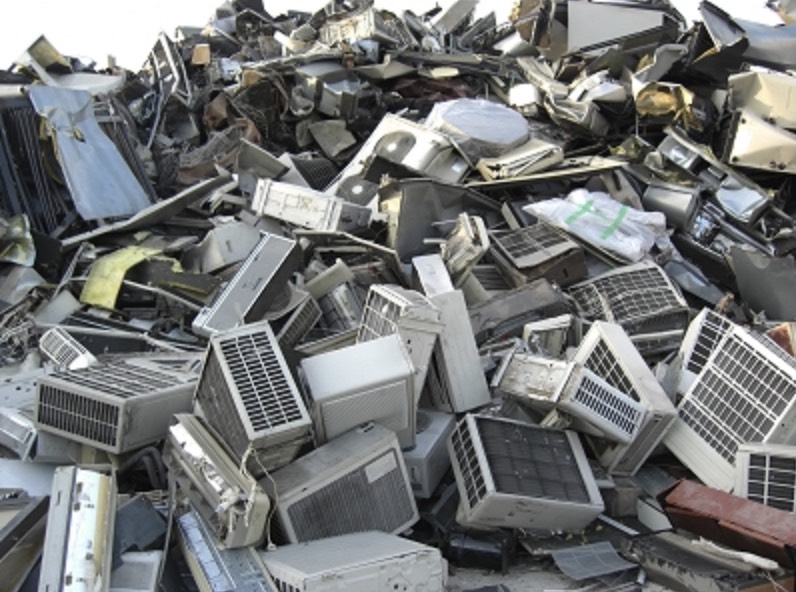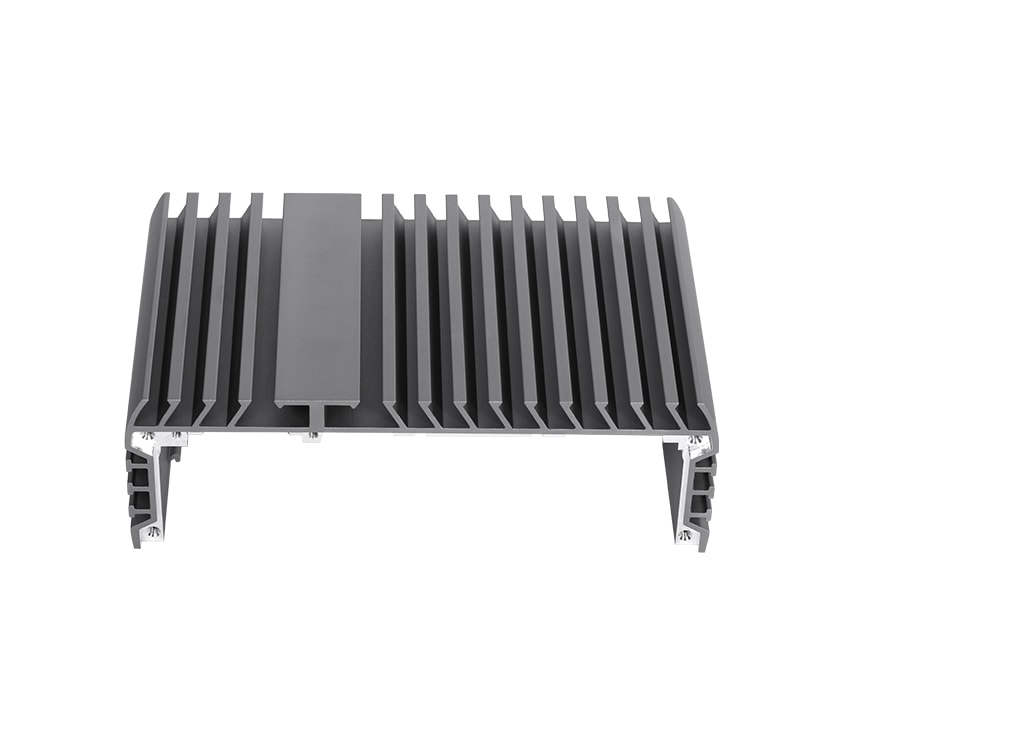In the realm of electronics, the quest for efficient thermal management is paramount. Heat sinks stand as the silent sentinels that protect our devices from the ravages of overheating. At the core of this endeavor lies the material choice, which significantly influences the sustainability and performance of these cooling units. Enter recyclable aluminum heat sinks – a testament to the fusion of environmental consciousness with industrial necessity. Aluminum, known for its excellent thermal conductivity and lightweight properties , has long been a material of choice for heat sinks. However, when it's sourced responsibly through recycling, its benefits extend beyond mere functionality. Recyclable aluminum heat sinks not only ensure operational efficiency but also contribute to a circular economy, reducing the carbon footprint and conserving natural resources. This article delves into the sustainable horizon of heat sink technology, where every piece of excess material is a potential resource for future production. We will explore how the incorporation of recyclable aluminum and the commitment to recycling excess materials in the manufacturing process are paving the way for a greener, more efficient thermal management solution.
Renewable aluminum heatsinks
are heat dissipation devices crafted from recycled aluminum, ensuring a reduced environmental impact compared to virgin materials. These heatsinks are defined by their sustainability, leveraging the recyclability of aluminum, which can be repurposed indefinitely without losing its intrinsic properties. The advantages of renewable aluminum heatsinks are multifaceted. Firstly, they offer superior thermal performance due to aluminum's natural conductivity, making them highly efficient in heat transfer. This efficiency translates to longer component life and enhanced system reliability. Secondly, the use of recycled aluminum reduces energy consumption by up to 95% compared to the production of new aluminum from raw materials, thereby significantly lowering greenhouse gas emissions. Moreover, the economic benefits are notable. Renewable aluminum heatsinks decrease the demand for raw materials, often resulting in cost savings that can be passed onto consumers. As global awareness of ecological responsibility grows, these heatsinks align with the market shift towards greener products, positioning manufacturers at the forefront of sustainable technology.

Heat sinks facilitate the transfer of heat away from electronic components, maintaining operational temperatures for optimal performance and longevity. Their functionality is based on the principles of thermal conduction, convection, and radiation. The process begins with thermal conduction, where heat is transferred from the heat-generating component, such as a CPU or LED, to the heat sink's base, which is in direct contact. The base is typically made from a high-thermal-conductivity material like aluminum or copper, ensuring efficient heat transfer. From the base, the heat is conducted into the fins or the heat sink's extruded structure. These fins provide a large surface area that significantly increases the heat dissipation capability. The design of the fins is crucial; they are strategically arrayed to maximize the surface area for effective heat dispersion. The next step is convection, where the heat absorbed by the fins is transferred to the surrounding air. This is often augmented by mechanical means, such as fans, which increase the rate of airflow over the fins, accelerating the heat exchange with the air and effectively lowering the temperature of the heat sink. Finally, radiation plays a role in the cooling process, where heat is emitted in the form of infrared radiation from the heat sink's surface into the environment. This passive cooling method contributes to the overall effectiveness of the heat sink, even in the absence of forced convection. In summary, heat sinks operate through a synergistic combination of conduction, convection, and radiation to ensure that excess heat is efficiently removed from electronic components, safeguarding them from thermal damage and maintaining their performance.
In the manufacturing of aluminum heat sinks, the generation of waste is an inevitable byproduct. However, the process doesn't end there; it's where sustainability takes a significant turn. The discarded aluminum scraps and swarf from the production process are not discarded but are, instead, channeled into a secondary recycling loop. This secondary recycling involves the collection of these waste materials, which are then sorted, cleaned, and prepared for re-melting. The re-melted aluminum maintains its quality, allowing it to be re-rolled or re-extruded into new sheets, bars, or other forms suitable for manufacturing additional heat sinks or other components. The circular utilization of waste not only conserves natural resources by reducing the need for fresh aluminum extraction but also cuts down on energy consumption and related CO2 emissions compared to primary production methods. This closed-loop recycling system is a cornerstone of sustainable manufacturing practices, ensuring that the aluminum used in heat sinks can be recycled indefinitely without degradation in performance, thus contributing to a circular economy.

Heat sinks are categorized by their design and application, tailored to the specific thermal management needs of various electronic components. The primary types include:
| Finned Heat Sinks: | These are the most common, featuring an array of fins that extend from the base to increase surface area for enhanced heat dissipation. They are widely used in computers, power electronics, and telecommunications equipment. |
| Pin Heat Sinks: | Similar to finned types but with pins instead of fins, they offer better performance in applications with limited airflow, such as compact electronics and LED lighting systems. |
| Stacked Heat Sinks: | Comprised of multiple layers or sections stacked on top of each other, these are designed for high-power applications where a greater amount of heat must be dissipated. |
| Chip-Scale Heat Sinks: | Miniature versions designed for small components like surface-mounted devices, where space is at a premium. |
| Liquid-Cooled Heat Sinks: | Incorporate a liquid coolant that absorbs heat from the base and transfers it to a remote radiator for cooling, suitable for high-density heat sources like power electronics and lasers. Applications of heat sinks are diverse and critical in maintaining the performance and reliability of electronic systems. They are employed in: |
| Personal Computers (PCs): | To cool central processing units (CPUs) and graphics processing units (GPUs). |
| Servers and Data Centers: | For thermal management of high-density computing environments. |
| Automotive Electronics: | Protecting engine control units and entertainment systems from overheating. |
| Telecommunications: | Cooling base station equipment and ensuring signal integrity. |
| LED Lighting: | Extending the life of LEDs by dissipating heat effectively. |
Each type of heat sink is engineered to address the unique thermal challenges of its intended application, ensuring efficient heat transfer and optimal performance in a variety of electronic devices and systems.
Enner, a leading manufacturer of thermal management solutions, has set a precedent in sustainability with their innovative approach to heat sink production. A notable case study involves their implementation of an advanced recycling system that recovers over 98% of aluminum waste from the manufacturing process. This recycled aluminum is then repurposed in the production of new heat sinks, significantly reducing Enner's environmental footprint and material costs. Enner's heat sinks are also distinguished by their unique design, which optimizes natural convection for applications where fan-based cooling is not feasible. This design innovation has been successfully applied in the automotive industry, where their heat sinks have improved the efficiency and reliability of in-vehicle electronics.
Looking ahead, the heat sink industry is poised for significant advancements. Enner is at the forefront of research into nanostructured materials that promise to enhance thermal conductivity, offering a quantum leap in heat dissipation efficiency. Additionally, the integration of IoT sensors into heat sink designs is anticipated to enable real-time thermal monitoring and predictive maintenance, further preventing system failures and extending the lifespan of electronics. The trend towards miniaturization in electronics will also drive the development of more compact and efficient heat sinks. Enner is exploring the use of additive manufacturing techniques to produce complex heat sink geometries that traditional manufacturing methods cannot achieve. This will allow for tailored solutions for specific applications, further optimizing thermal performance in tight spaces. As environmental considerations continue to influence industrial design, Enner's commitment to sustainability is expected to be mirrored across the sector. The future of heat sink technology is not just about improved performance, but also about creating solutions that align with a circular economy and contribute to a lower carbon future.
By continuing to use the site you agree to our privacy policy Terms and Conditions.